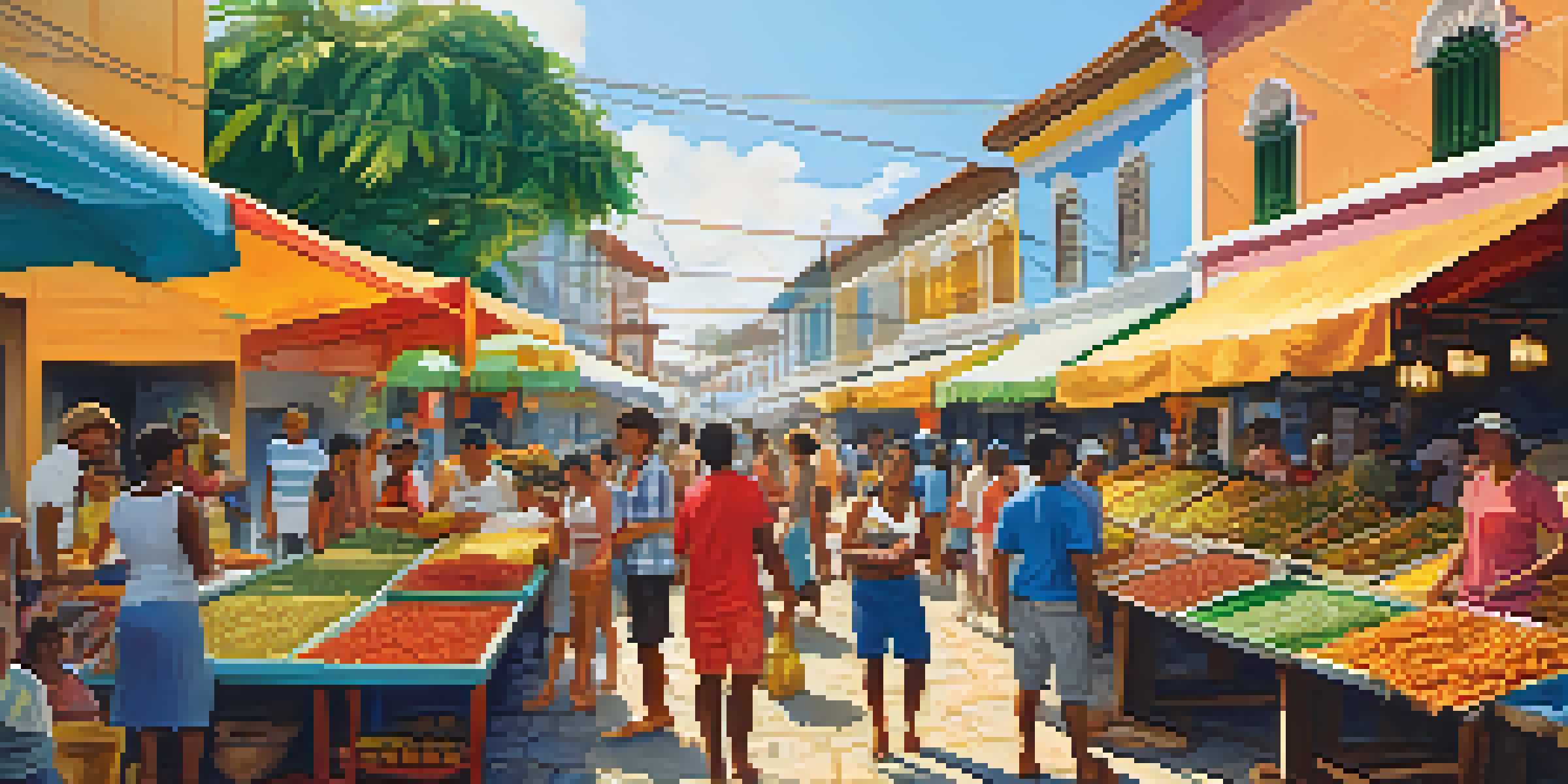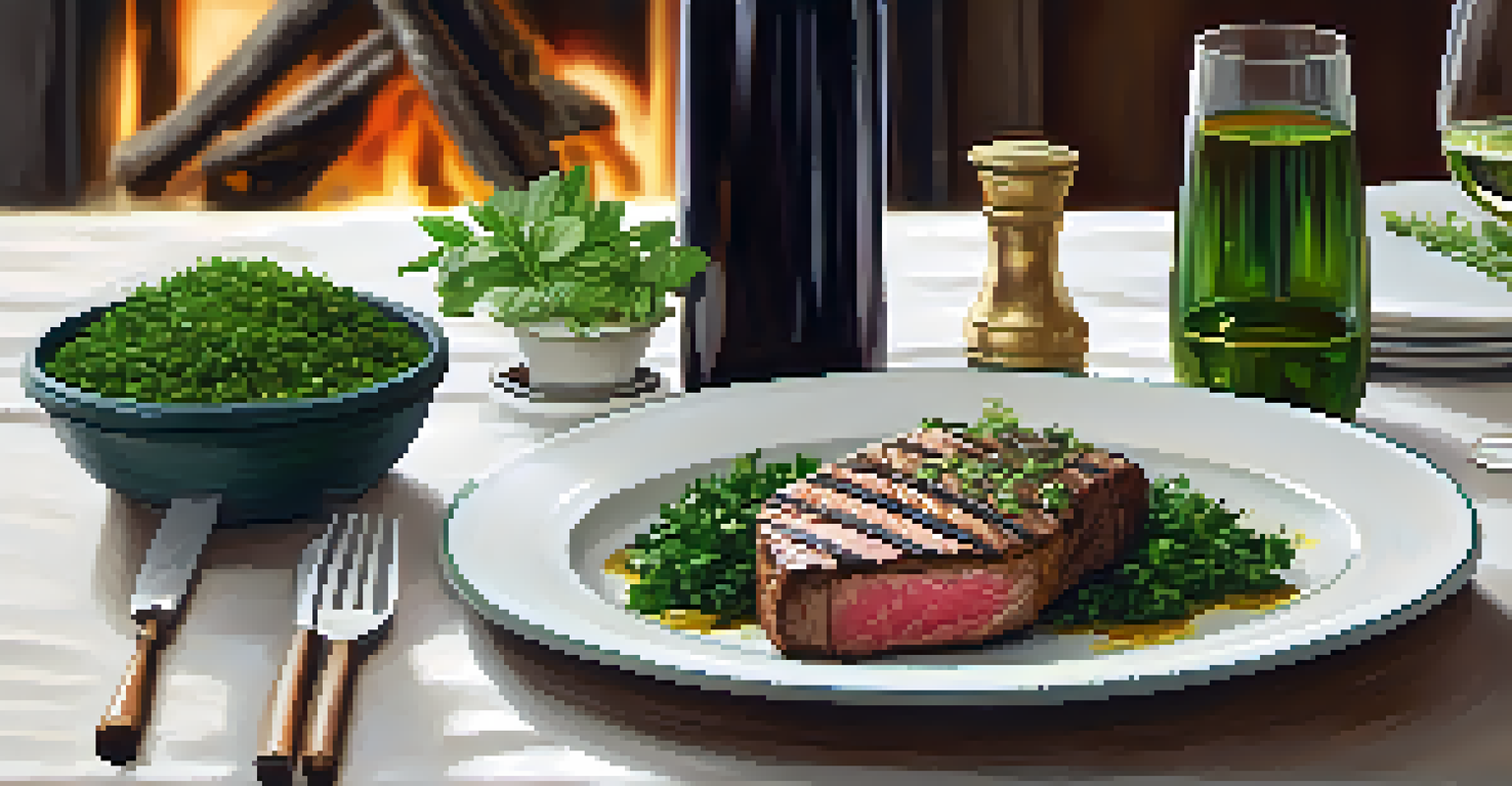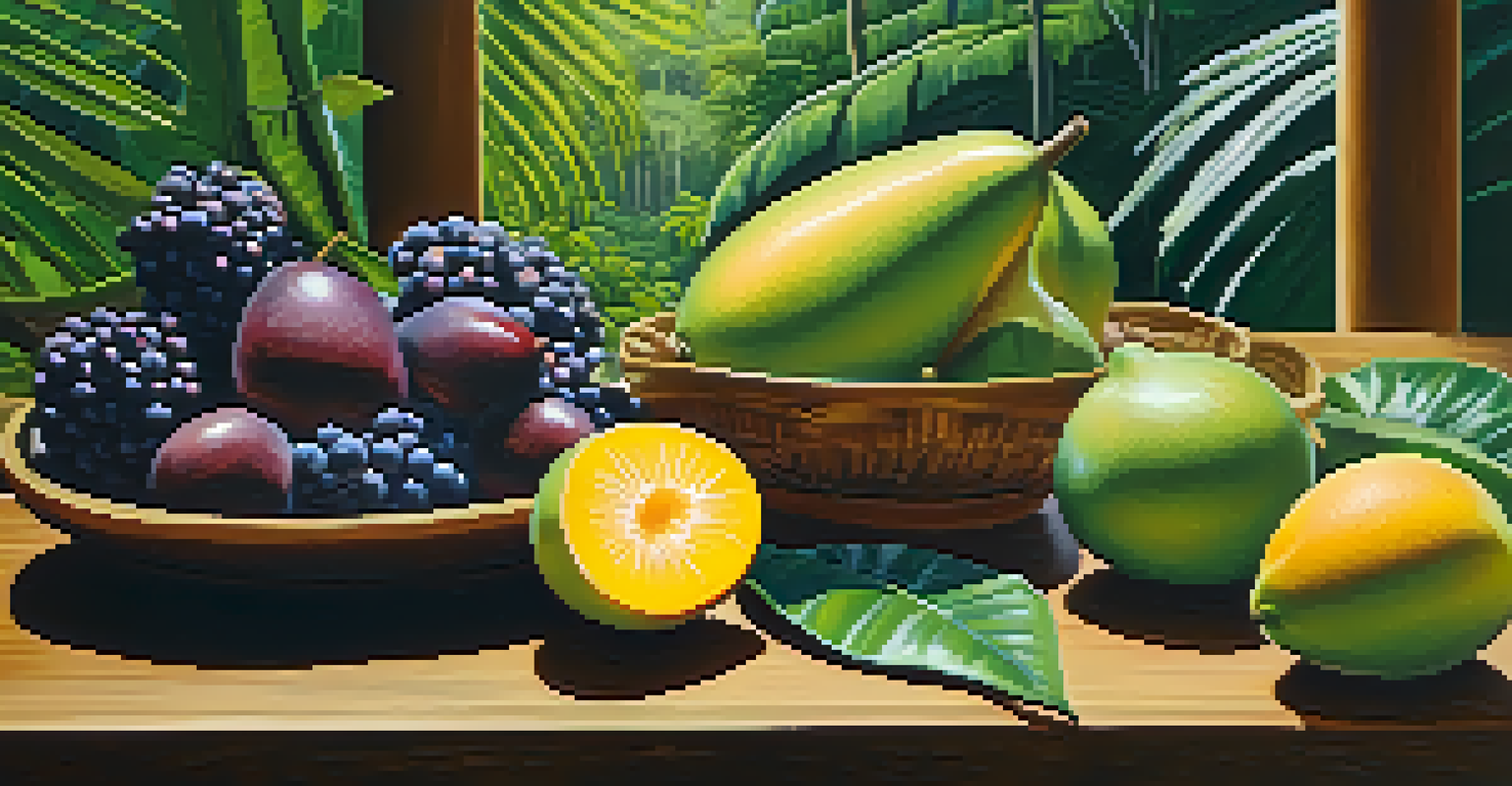Discovering Brazil's Culinary Heritage Trails Across Regions

Understanding Brazil's Diverse Culinary Landscape
Brazil's culinary heritage is as diverse as its people, shaped by indigenous, African, and European influences. This melting pot of cultures has resulted in a rich tapestry of flavors and cooking techniques that vary widely across regions. Each state offers its unique dishes, ingredients, and traditions, making the country a food lover's paradise.
Food is our common ground, a universal experience.
From the feijoada of Rio de Janeiro to the acarajé of Bahia, each dish tells a story of the region's history and its people. These culinary narratives are often intertwined with local customs, festivals, and daily life, providing a deeper understanding of Brazil's vibrant culture. As you explore these culinary trails, you'll find that food is not just sustenance; it’s a way to connect with the heart of Brazilian society.
Traveling through Brazil's regions allows you to savor local specialties and discover the rich agricultural heritage that supports them. Whether it’s the Amazon's exotic fruits or the coastal seafood of Bahia, each bite is a journey through the country’s diverse environments and histories. This exploration of culinary heritage is not just about eating; it’s about experiencing Brazil in a uniquely flavorful way.
The Northeastern Flavors: A Journey to Bahia
In Bahia, the culinary scene is vibrant, influenced by African traditions and local ingredients. Dishes like moqueca, a fragrant fish stew made with coconut milk, and dendê oil, showcase this unique blend of flavors that are both rich and inviting. The use of spices and herbs is essential, reflecting the region's history of trade and cultural exchange.

Street food is an integral part of Bahia's culinary culture, with vendors serving up delights like acarajé—black-eyed pea fritters filled with shrimp and spices. Enjoying these snacks in the lively markets and festivals allows you to feel the spirit of the region. It’s a culinary adventure that tantalizes the taste buds while immersing you in the local rhythm.
Brazil's Culinary Diversity Explained
Brazil's cuisine reflects a rich blend of indigenous, African, and European influences, creating unique dishes across its diverse regions.
Bahia's culinary heritage is more than just food; it's a celebration of community and culture. Festivals often revolve around traditional dishes, where locals gather to share meals and stories. This sense of togetherness is palpable, making a visit to Bahia not just a taste experience, but a journey into the heart of Brazilian communal life.
Exploring the Amazon: Unique Ingredients and Dishes
The Amazon region offers a distinct culinary experience, highlighting ingredients that are often unknown outside Brazil. From exotic fruits like açaí and cupuaçu to fish such as tambaqui, the Amazon's biodiversity creates a wealth of flavors. This region's cuisine is heavily influenced by indigenous practices, with a focus on sustainability and local sourcing.
The discovery of a new dish does more for the happiness of mankind than the discovery of a new star.
One must-try dish is the tacacá, a traditional soup made with tucupi, a yellow broth derived from cassava, and served with jambu leaves. Its unique flavor profile showcases the Amazon's rich natural resources, and each spoonful tells a story of the land. Sampling these dishes is an adventure, taking you deeper into the culture and the environment of the Amazon.
Eating in the Amazon is not just about the food; it's also about connecting with the people who cultivate and harvest these ingredients. Visiting local markets and engaging with indigenous communities provides insight into their culinary techniques and traditions. This interaction highlights the importance of preserving both the environment and the cultural heritage that shapes this remarkable cuisine.
Savoring the Southern Flavors: A Taste of the Pampas
The Southern region of Brazil, particularly Rio Grande do Sul, is known for its rich meat dishes and traditional barbecue, or churrasco. The gauchos, or cowboys of the pampas, have perfected the art of grilling meat over open flames, creating a social dining experience that brings families and friends together. The flavors are bold, and the portions are generous, embodying the spirit of Southern hospitality.
One popular dish, the picanha, is a cut of beef that’s seasoned simply with salt and cooked to perfection. This dish is often served with chimichurri, a tangy sauce that enhances the meat's flavor. Pairing it with local wines, particularly the robust reds from the region, elevates the dining experience and showcases the area's agricultural bounty.
Bahia: A Celebration of Flavors
Bahia's culinary scene is vibrant and communal, showcasing traditional dishes like acarajé and moqueca that embody the region's cultural heritage.
In the South, food is about more than just sustenance; it's an expression of culture and identity. Festivals celebrating traditional foods and barbecue competitions create a vibrant atmosphere where locals share their culinary skills. Visiting this region offers an authentic taste of Brazil's southern culture, where every meal is a celebration of community.
The Central-West: A Fusion of Cultures and Flavors
The Central-West region of Brazil, including states like Goiás and Mato Grosso, is known for its diverse culinary influences, combining indigenous, African, and European flavors. Dishes such as arroz com pequi, made with a unique fruit native to the region, highlight this fusion and offer a taste experience that is both unique and satisfying. The focus on local ingredients creates a strong connection to the land.
Street food plays a significant role in the Central-West's culinary scene, with vendors serving up delicacies like empadão, a savory pie filled with meat and spices. These dishes are perfect for enjoying while exploring the bustling markets and small towns. Each bite offers a glimpse into the everyday lives of the people in this region.
Culinary traditions in the Central-West are often tied to agricultural practices, with a focus on sustainability and local sourcing. Engaging with local farmers and producers reveals the importance of preserving these traditions while ensuring the quality of the ingredients used in cooking. This connection to the land enriches the culinary experience, making it a journey of discovery.
Southeast Brazil: A Melting Pot of Flavors
Southeast Brazil, home to major cities like São Paulo and Rio de Janeiro, is a culinary melting pot that reflects the country’s diverse immigrant influences. Italian, Japanese, and Middle Eastern cuisines have all found a place in this vibrant food scene, resulting in innovative dishes that blend traditional and contemporary flavors. This region is a hub for food enthusiasts eager to explore new tastes.
One iconic dish, the pizza paulista, showcases this fusion beautifully, featuring a thin crust and inventive toppings that reflect the diverse cultural influences. Additionally, the sushi bars of São Paulo are a testament to the city's multiculturalism, where fresh fish is prepared with a Brazilian twist. Each meal tells a story of the city’s rich heritage and its embrace of global flavors.
Indigenous Roots in Brazilian Cuisine
Indigenous ingredients and techniques are foundational to Brazil's culinary identity, influencing modern dishes while promoting cultural appreciation.
The Southeast also boasts a thriving street food culture, with vendors offering a range of snacks from pastel (fried pastry) to coxinha (chicken croquettes). These handheld delights are perfect for sampling while wandering through the lively streets. This aspect of the culinary scene emphasizes the region's dynamic nature, making it a must-visit for anyone looking to experience Brazil's culinary diversity.
The Influence of Indigenous Cuisine on Brazil's Culinary Identity
Indigenous cuisine plays a crucial role in shaping Brazil's culinary identity, offering a wealth of ingredients and cooking methods that are still celebrated today. Staples like cassava, corn, and various fruits form the basis of many traditional dishes, reflecting a deep respect for the land and its resources. These ingredients are often prepared using ancient techniques that have been passed down through generations.
One notable dish is the farofa, made from toasted cassava flour and often served as a side dish. Its versatility allows it to accompany various meals, showcasing the adaptability of indigenous ingredients. The use of local herbs and spices further enhances the flavors, creating a distinct taste that connects diners to Brazil's roots.

As the culinary landscape continues to evolve, there is a growing movement to honor and preserve indigenous food traditions. Chefs are increasingly incorporating indigenous ingredients into their menus, highlighting their importance in contemporary Brazilian cuisine. This revival not only enriches the culinary scene but also promotes awareness and appreciation for Brazil's indigenous cultures and their contributions.
Conclusion: Embracing Brazil's Culinary Heritage
Exploring Brazil's culinary heritage is a journey filled with flavors, stories, and cultural connections. Each region offers a unique perspective on the country's diverse food landscape, inviting you to taste the history and traditions that shape Brazilian cuisine. From the vibrant dishes of Bahia to the hearty meals of the South, there’s something for everyone to enjoy.
As you traverse these culinary trails, you'll not only satisfy your taste buds but also gain a deeper understanding of Brazil's rich cultural tapestry. Food serves as a gateway, allowing you to connect with locals and experience their way of life. This journey is not just about eating; it's about embracing the spirit of Brazil and its people.
Brazil's Culinary Diversity
Brazil's cuisine is a rich tapestry of flavors influenced by indigenous, African, and European cultures, with each region offering unique dishes and traditions.
In a world where food often brings us together, Brazil's culinary heritage stands as a testament to the power of culture and community. So grab a fork and embark on this flavorful adventure—each dish is a delicious invitation to discover the heart and soul of Brazil.